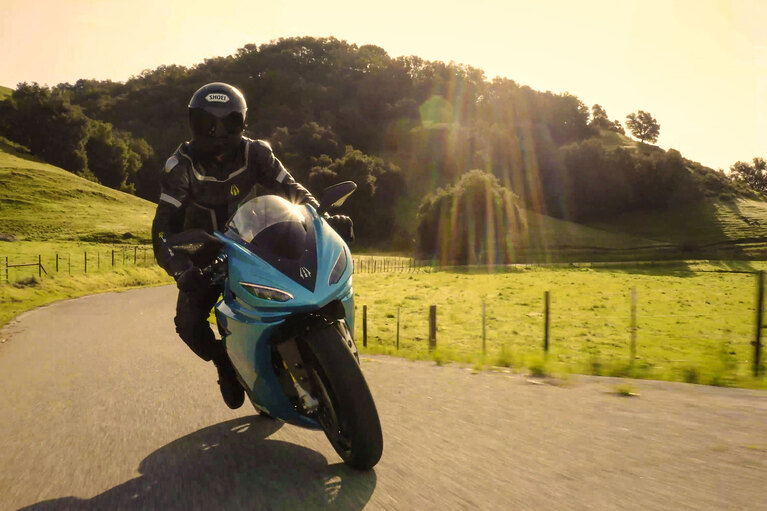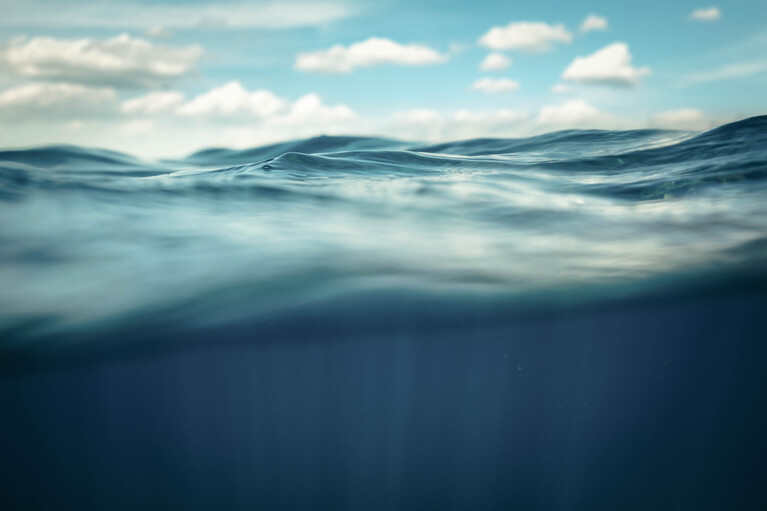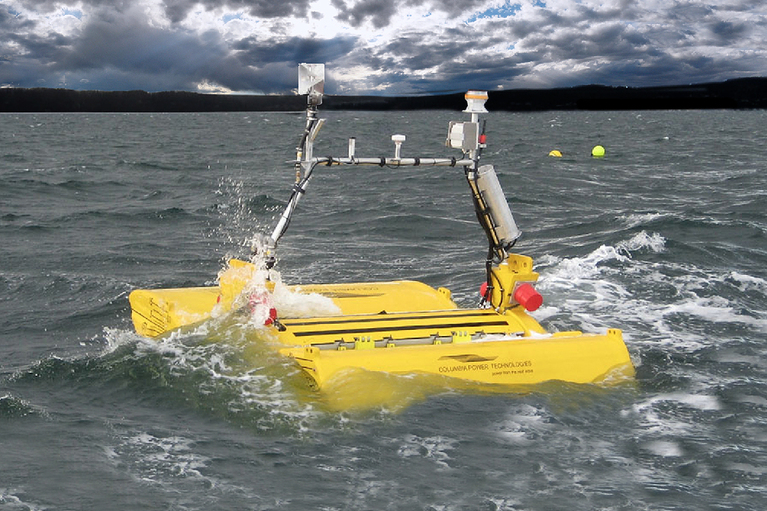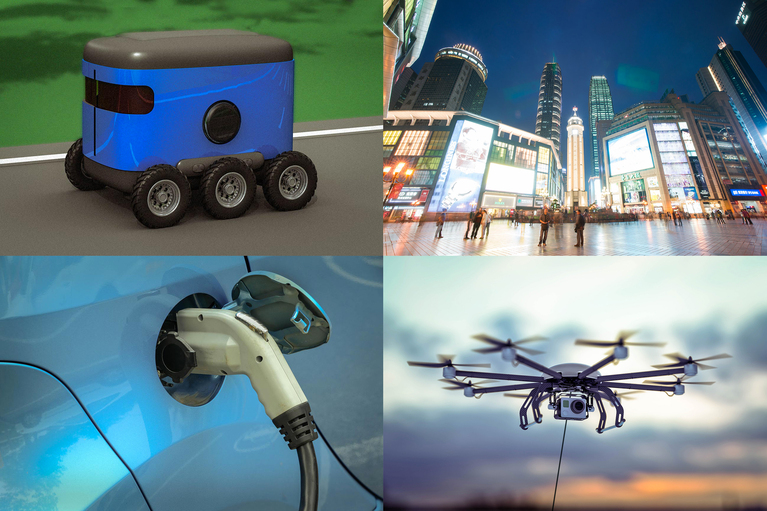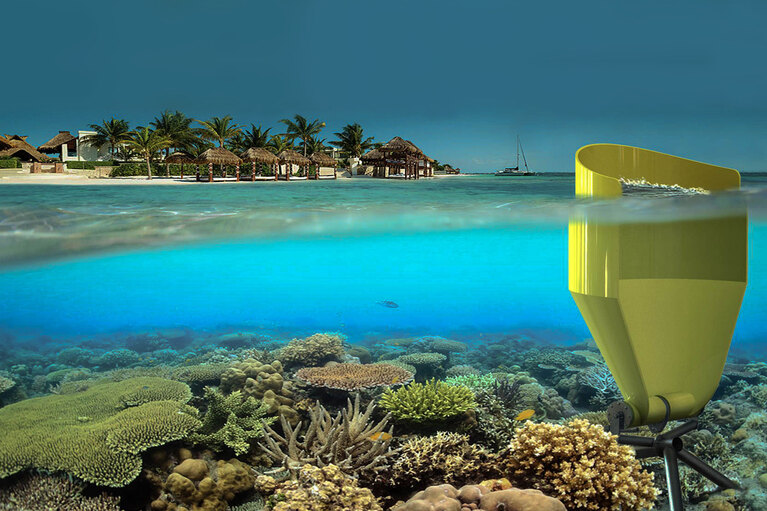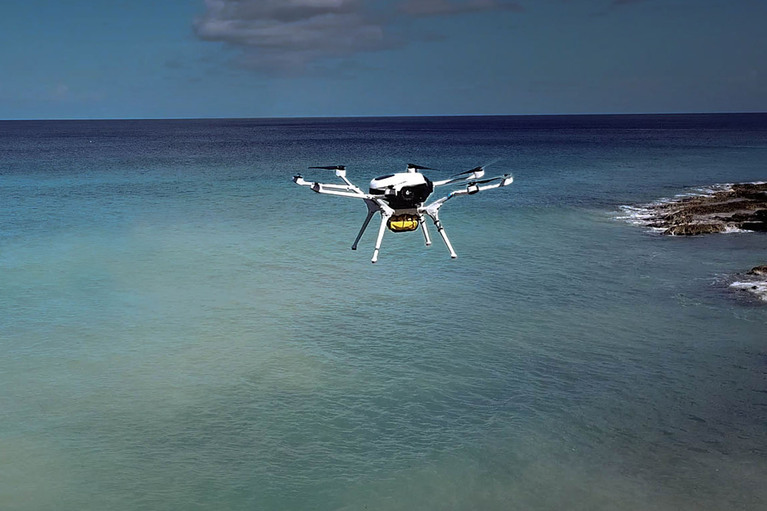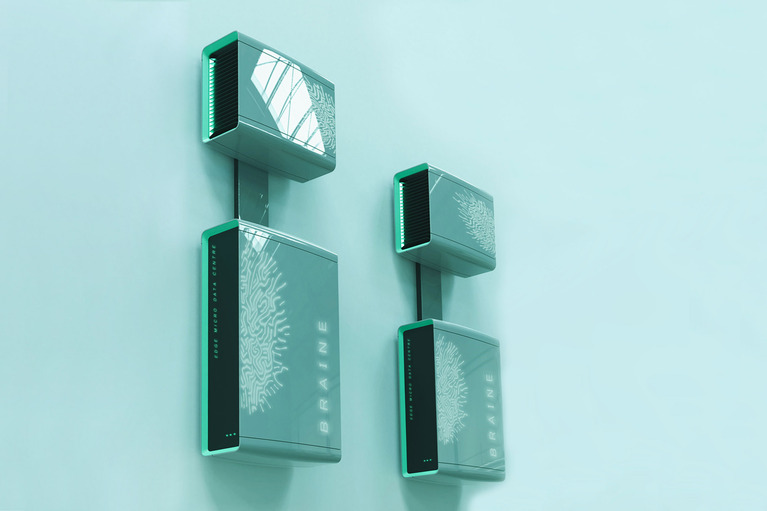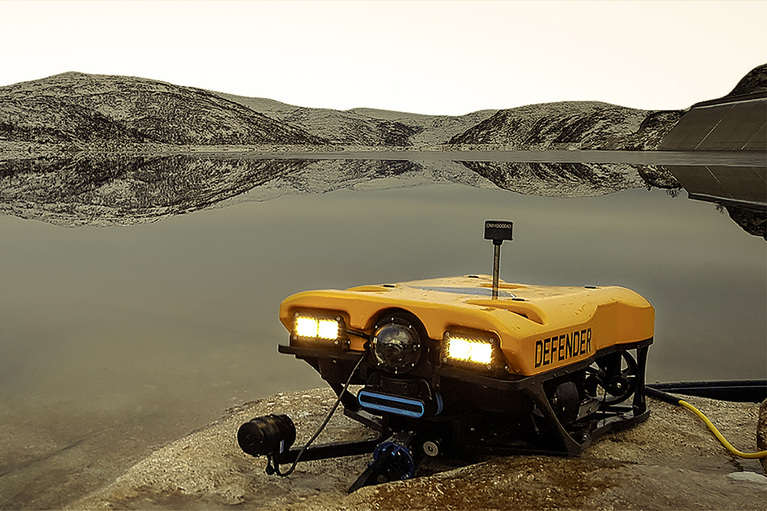Podcast with Bill Schmitz, President, Vicor Power Systems, Joe Prudell, Director Oregon Corp. Operations C-Power and Alix Paultre, Editor, Electronic Design
The global market for wave and tidal energy is projected to reach $5.1 billion by 2027, according to Businesswire. The opportunity to use one of the earth’s largest natural resources is tremendous. The biggest challenge to date has been efficiency. Capturing the kinetic energy of widely varying waves—from tumultuous storms to relative calm waters — is very difficult.
Columbia Power Technologies, Inc. (C-Power), working in partnership with Vicor, has developed SeaRay, an autonomous offshore power system (AOPS) float in the ocean, capturing mechanical wave energy and converting it into usable power for a wide range of applications.
Based in Corvallis, Oregon, C-Power is a global leader in wave energy systems, helping to expand the marine economy by providing reliable, cost-effective energy generation and storage, as well as data and communication services for offshore applications.
Joe Prudell, director of corporate operations and Bill Schmitz, president of Vicor Power Systems (a subsidiary of Vicor) were guests on the Evaluation Engineering podcast to discuss their innovative power design and the opportunity that SeaRay presents.
PAULTRE: Hi, I’m Alix Paultre, Editor of Evaluation Engineering, and I’d like to welcome you to another episode of the TechXchange talks where we talk to interesting people in the electronics industry about interesting things.
Today, we’ve got Joe Prudell. He’s the senior electrical engineer and director of corporate operations over at C-Power. And we’ve got Bill Schmitz. He is the president of Vicor Power Systems. And I’d like to welcome both of you gentlemen to the show, thanks for being here.
SCHMITZ: Right, thank you.
PRUDELL: Thanks for having us.
PAULTRE: Well, power is really becoming wonderful, isn’t it? Power for such a long time was relegated to the back of the bus and to the edge of the board and was the last thing discussed, and now power is the first thing you talk about when you’re doing anything today, because of energy budgets and energy efficiency desires and all kinds of optimization targets. So it’s almost as if power’s within a new Renaissance. What’s your take on that, Bill?
SCHMITZ: Well, power certainly is required because every single thing that you have runs on power – electric cars, lights, refrigerators, every single thing. Creating or converting that power, or figuring out where to get that power is the trick, and it’s getting harder and harder to be more and more efficient.
PAULTRE: What are your thoughts on that, Joe?
PRUDELL: Certainly, and that’s why we’re in the market of ocean wave energy — really, we're here to create a renewable energy source whether it’s in the middle of the ocean or something that we can connect to the grid. In this particular case, we’re really looking at these autonomous power systems so you could have a power plug in the middle of the ocean. And it’s renewable, it can last for years. So the reason we approached Northwest Power was to help us create some of these power converters.
PAULTRE: That’s really interesting, Joe, because one of the aspects of alternate energy technologies is that the advances in next-generation power conversion technologies are enabling these things. Once upon a time if you were running an old school diode bridge inverter, you wouldn’t have the efficiencies, you wouldn’t be able to make something like this happen. But we can really make these concepts viable.
PRUDELL: Absolutely. And that’s really how we started over about 17 years ago now I’ve been working with it, is about the time that power electronics industry, the semiconductor industry really allowed for these advances in efficiency and power conversion. And when it comes to our technology, which the direct drive technology, it really relies on the power electronics to do the efficiency conversion which I consider to be really dirty power coming out of the generator.
PAULTRE: It’s interesting to look at it as dirty power because those inefficiencies can cascade through the system, right? Bill, you get a handle on what happens when you don’t have good power.
SCHMITZ: Well, that’s true. So we’ve been used to, in the past — we have nice, clean 60 hertz sine wave coming in, relatively well regulated within a few percent, and all we got to do is convert it and create some normal DC voltage.
Energy, however, comes in many forms. You have photovoltaic, you have sunlight, in this case we have wave energy. There’s all kinds of sources of energy, which is no way near as organized as what you might see coming out of the wall into your plug.
PAULTRE: Joe, why don’t you explain a little bit how the technology works, how your solution actually takes the wave energy and makes it available to the user?
PRUDELL: So I think we first start — one of the initial difficulties — there’s many areas of conversion. The first conversion we do is convert the motion of the ocean into mechanical energy, and that’s really one of the arts that we have here at C-Power is the ability to do that accurately and efficiently. From there, we have a machine that essentially, for these small power systems, let’s say correlated to your average lawn mower, somewhere on order of 40 horsepower, right, five to 10 kilowatts. But it might need 10,000 foot pounds of torque to do that. So the real trick is converting incredibly high torques into usable power, and to do this really effectively and efficiently, and of course, economically, also, you need to convert the entire range of energy, from a very low speed, where the voltage is low and the frequencies are low, to a very voltage where the voltages are high and the frequencies and high.
And then for every wave — so we have a stochastic wave climate — we convert every wave into a pulse of energy. But that pulse of energy is really just high frequency high voltages, pulsed. In this particular case, most of the time, when it comes to these small devices, and this is reason we approached Vicor. When we’re down to the kilowatt range — or a little less — we’re just trying to provide power to our data systems. We want to go to a DC system. A lot of offshore systems are 48 volts.
So to get there we passively convert to a DC bus, and then Vicor’s helped us convert what I consider this dirty pulsed DC power coming in into something that we can regulate on an energy storage bus. From there there’s other forms of energy conversion, but that gets into something that normal engineering electronics can deal with.
PAULTRE: Well, it is a big challenge, though, isn’t it? Bill, what were some of the biggest challenges that you had to deal with? Obviously tremendous amplitudes, and those, in and of themselves, provide challenges. Could you give us an example of how you approached to that challenge?
SCHMITZ: Well, how I approached it was to try to listen to everything Joe had to say, which is quite extensive. But if you think about it, the conversion that C-Power does, which is take this wave and turn it, though some machine, into electrical signal, that signal replicates the wave almost exactly. So if you imagined a wave was pure sine wave, which it isn’t, it’s a multitude of sine waves. But if there was simply one nice big wave, you would see a pulse of voltage that’s somewhat proportional to that wave in that same cycle. And the cycle could be relatively long. So what the problem is, is that you have to convert from a very low voltage, and then sort of linearly up or somewhat non-linearly up to a relatively high voltage, and then back to a low voltage, and convert that in some relatively efficient manner out to some storage device, and then also manage it such that when the voltage is low, when a overcurrent or overload the generator because there’s very little energy there. So we had to manage the energy at all different voltages and frequency ranges.
PAULTRE: And that was a big challenge. So then Joe, once that had been done, you had to put it all together into a system that also included storage. What storage did you eventually decide to go with?
PRUDELL: We have a number of storage – types of storage. We have our intermediate storage, and a number of different devices can be used. We use ultra-capacitors in this case. This is where we take the pulses of power and store them into a semi-stable DC bus. That bus is semi-stable, like I said. I wouldn’t try to power something off it, but a lot of DC supplies have a fairly wide range. Maybe it’s 33 to 65 volts or whatever it ends up to be.
From there we can pull off that energy storage and we can go to battery chargers and maintain an onboard battery system, kind of similar that you see in an automobile, where your battery is maintained, and it’s always there to make sure the systems work, just in case the engine goes away, in this case, the waves go away. We also have, in case of some autonomous power systems, we have the capability to push that power all the way into the seafloor, where we have larger storage facilities, larger energy storage devices. So depending on the size of the device, whether it’s a small data buoy, 100 watts, this is a small unit, maybe one single Vicor converter, that’s an easy solution and it’s onboard storage. Or if we go up to all the way up into the five or 10 kilowatt range, this very large device, and you're powering larger loads. And from there the energy storage is really selected based on what the load will be.
PAULTRE: Well, that’s actually a very good point because it’s all about managing that load. So Bill, were there any additional challenges beyond that point to deal with the various users of that power? In other words, I can imagine most of the challenges were from the conversion point to the storage point, but were there any challenges from the storage point to the use point?
SCHMITZ: So the storage point to the use point, I’m not personally involved with, other than some consulting that I’ve been doing with Joe. I’m primarily doing the conversion from essentially the wave energy to the storage device, and that section of it essentially turned what Joe calls dirty power, or I call chaotic power, into a controllable current source into the storage device. And that current source somewhat mimics, also, the wave pulse.
PAULTRE: I think that’s an interesting aspect. Do you think, Joe, that maybe they could take that information and also, then, provide oceanographic data as well as power to the industry?
PRUDELL: Oh, certainly, the mid-ocean data. We could capture mid-ocean data fairly easy. And we’re always looking for the next ability to — the more information we learn about the ocean and the more we can predict, the better we can capture the energy from the ocean. So that’s a huge portion of our research, actually.
Energy conversion has always assumed that there is a means to an end. We can find a way to convert the power. It might be difficult, but a lot of times we end up spending a lot of time just trying to figure out the rest of it.
PAULTRE: Very cool, Joe. Joe, Bill, thank you so much for taking the time to come on this show and tell us about this project. I think it’s really interesting, and I think you’ll get some good interest from the audience, which I’ll remind, if you have any questions for us, please leave them in the comments, and we’ll make sure Bill and Joe get your questions.
So thanks again, gentlemen, I really appreciate you taking the time.
SCHMITZ: Thanks for hosting us.
PRUDELL: Yeah, thanks, Alix.
Bill Schmitz, President, Vicor Power Systems
Graduated from Gonzaga University in 1985 with an Electrical Engineering degree. Following graduation owned a consumer electronics company selling and servicing electronics. In 1987 I moved to Portland Oregon to work for a power supply company as a sustaining engineer performing root cause failure analysis, and then ultimately as a design engineer for custom discrete commercial and military power supplies.
In 1995 I co-founded Northwest Power as a subsidiary for Vicor Corp. to design and manufacture custom power supplies using Vicor components as core components.
